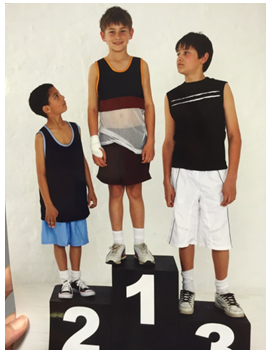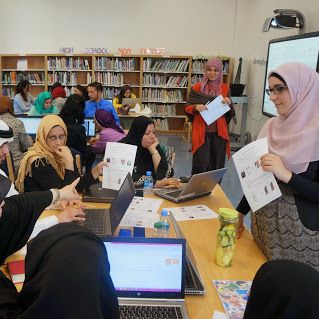
Voting to decide on types of clothing and types of action symbols
In the past month there have been final voting sessions on the first batch of adapted symbols and the voting on whether symbols should portray individuals just in Qatari dress or a mix and if action words (verbs) where gender is an issue should be portrayed by stick figures or would the dictionary need to have both male and female representations.
More votes on this subject may yet come in from the AAC Forum, but it is felt that the initial 50 votes, as a result of face to face meetings, could be revealed at this stage.
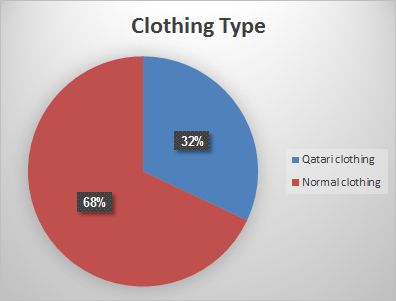
Voting shows 68% want a mix of clothing types

Voting shows 86% want gender specific verbs
Comments for the type of dress needed on the symbols included the following:
“less distracting”, “I like both, but prefer option 1 for Qatar” (voted for just Qatari dress) “one uncovered”, “make one of them dressed in Abaya”, “Make one of the girls wear abaya and one of the males wear a thowb”, “one in abaya and one with no headcover and for male one in thobe”, “add one person from action one”, “I prefer one to wear the abaya, one to wear a normal hijab and one without a hijab”, “with one uncovered hair”, “one girl/boy can be in Arabic traditional dress, one girl can be not covered”,
Comments for the type of drawing needed for verbs included the following:
“To make it more culturally representative and to bring out contrast of figure – around differentiation”, “the colours are clear”, “don’t like stick figures” “colour the stick”.
The decision has been made that we need to have a mix of clothing and verbs will be represented in both male and female where required.
Further voting sessions for adapted symbols took place with AWSAJ Academy teachers working with Arabic AAC users. The online Quick Voting system was used. To date 62 participants’ votes have been logged on the Symbol Manager resulting in 2341 votes for the initial batch of 65 symbols! These now need to be analysed for the comments received and the level of marks given out of 5 for each of the voting criteria – the voters feelings about the symbol generally, whether it was found to be a suitable representation of the word or phrase presented, whether it had sufficient colour contrast levels and cultural sensitivity. For all these criteria the average scores were above 3.9. Where individual symbols have received lower scores in any of the criteria further adaptations will be made taking into account any comments received. These redrawn symbols will be submitted for voting once again alongside new symbols developed for the next batch of voting that will take place in May.
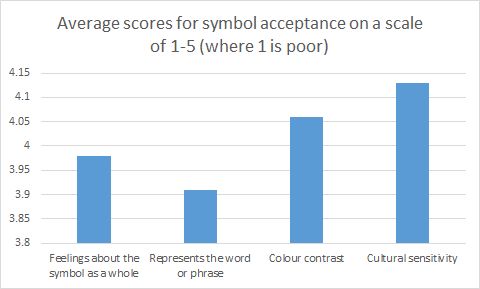
Average scores for symbols in Batch 1 all over 3.9 out of 5
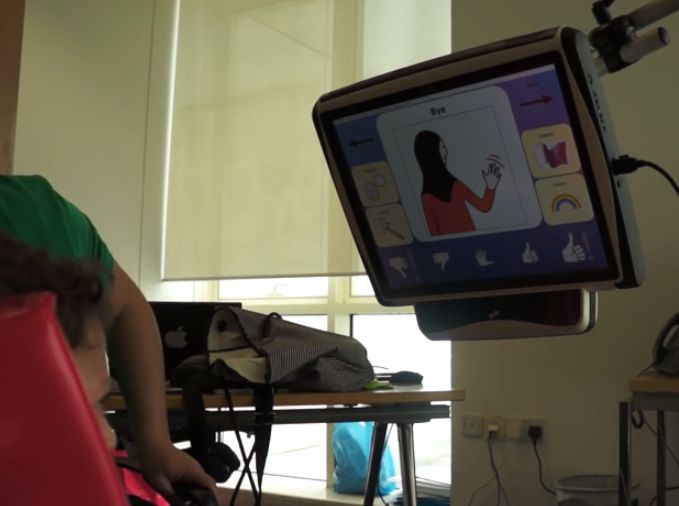 Aejaz and Tullah also met up with two young AAC Users on separate occasions. Aejaz set up a batch of 21 symbols on a grid with 5 versions of thumb positions for the 5 scores for A aged 8, with the support of his father he voted on the symbols and the results were positive with only 3 symbols being marked below the mid point as can be seen with the results below.
Aejaz and Tullah also met up with two young AAC Users on separate occasions. Aejaz set up a batch of 21 symbols on a grid with 5 versions of thumb positions for the 5 scores for A aged 8, with the support of his father he voted on the symbols and the results were positive with only 3 symbols being marked below the mid point as can be seen with the results below.
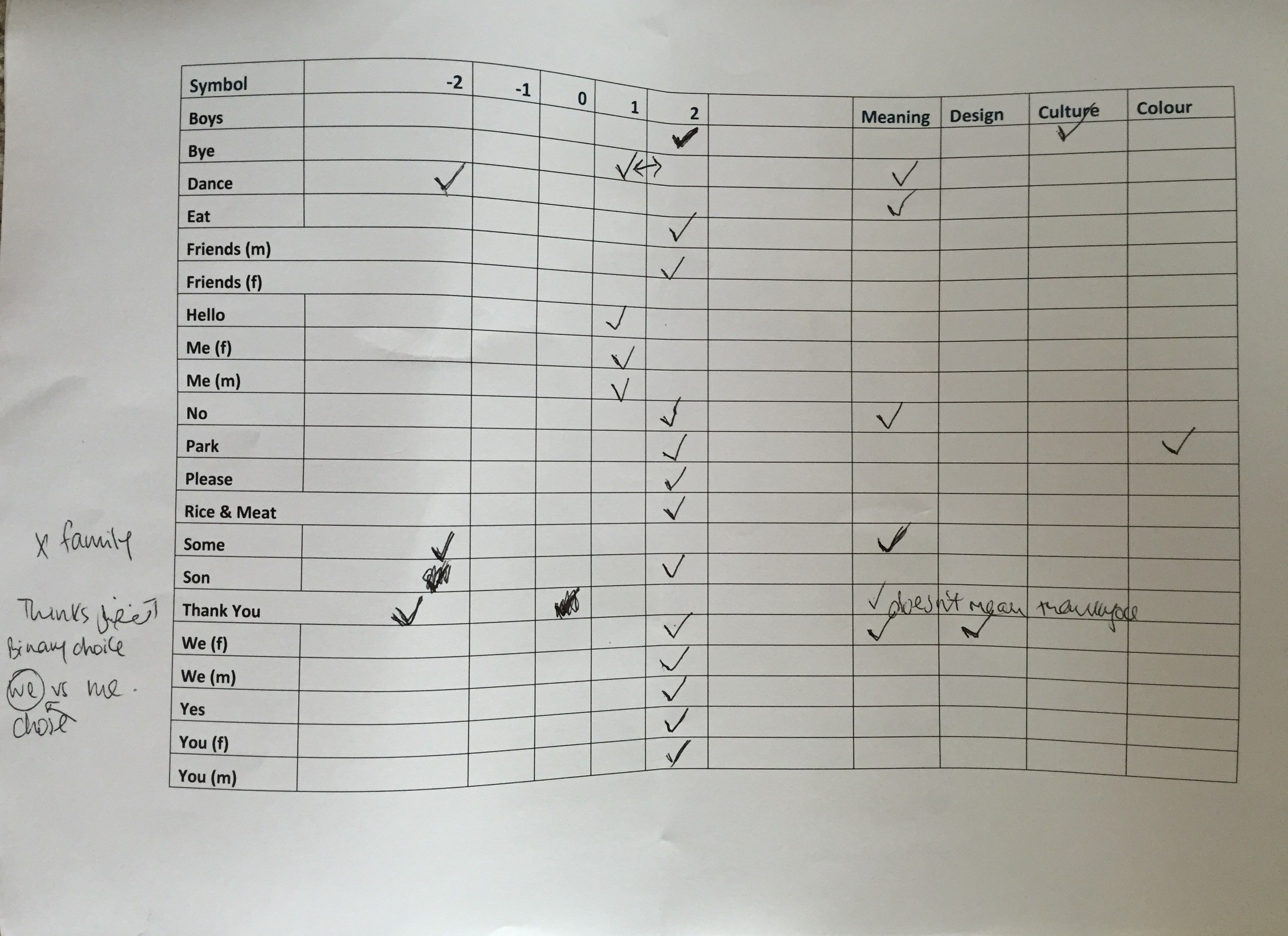
 When working with M in the Shafallah Center, the criteria for voting was simplified to thumbs up for an acceptable symbol straight across for in the middle and thumbs down for a reject. The latter worked well and once again most symbols were found to be acceptable. It is hoped we will have more case studies to share and batch 2 of the adapted symbols will be voted on during May and early June before Ramadan.
When working with M in the Shafallah Center, the criteria for voting was simplified to thumbs up for an acceptable symbol straight across for in the middle and thumbs down for a reject. The latter worked well and once again most symbols were found to be acceptable. It is hoped we will have more case studies to share and batch 2 of the adapted symbols will be voted on during May and early June before Ramadan.


 As part of our project, it is essential that AAC users and persons with communication difficulties evaluate our symbols. This will ensure that the very people that will be using them can provide us with feedback and we can tailor the symbols to their needs. The team contacted the Speech Therapy team at AWSAJ Academy for students with special needs to see if we could do a voting session with some of their students. Dr. Biji Philips arranged for 11 students to vote individually, with 15 minute time slots to complete the task. 2 students; a Tobii user with Cerebral Palsy and another with severe Autism required 30-45 minutes.
As part of our project, it is essential that AAC users and persons with communication difficulties evaluate our symbols. This will ensure that the very people that will be using them can provide us with feedback and we can tailor the symbols to their needs. The team contacted the Speech Therapy team at AWSAJ Academy for students with special needs to see if we could do a voting session with some of their students. Dr. Biji Philips arranged for 11 students to vote individually, with 15 minute time slots to complete the task. 2 students; a Tobii user with Cerebral Palsy and another with severe Autism required 30-45 minutes.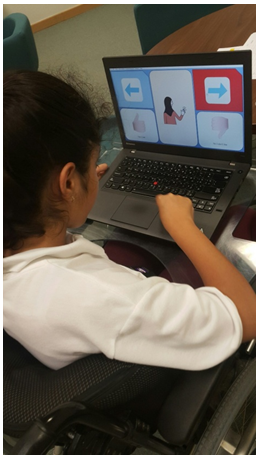 thumbs up and thumbs down symbol to communicate their like/dislike for the symbol. Some students preferred to use okay as an option as well. Based on the student’s capacity judged online, Nadine and I asked why they liked/disliked the symbols. Some of the older students were superb and gave us detailed feedback relating to the need for more detailed facial expressions, or adding context to the symbol rather than just characters. Others did not want to let us down and said they liked the majority of the symbols. Here are the results of the voting sessions:
thumbs up and thumbs down symbol to communicate their like/dislike for the symbol. Some students preferred to use okay as an option as well. Based on the student’s capacity judged online, Nadine and I asked why they liked/disliked the symbols. Some of the older students were superb and gave us detailed feedback relating to the need for more detailed facial expressions, or adding context to the symbol rather than just characters. Others did not want to let us down and said they liked the majority of the symbols. Here are the results of the voting sessions: